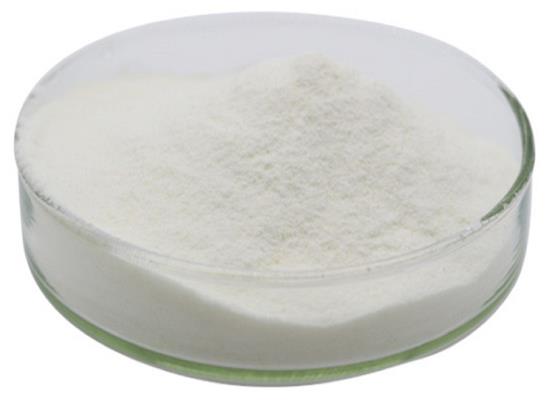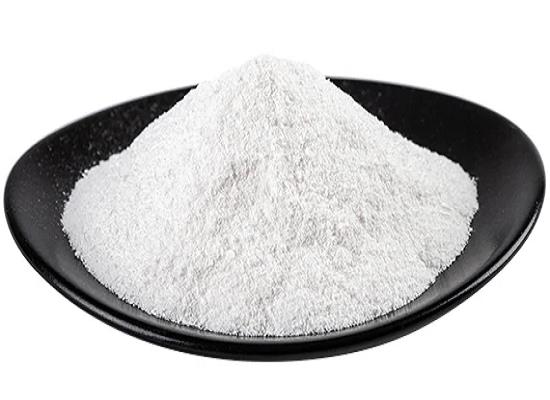Exploring Glucagon's Role in Insulin Secretion and its Implications for Diabetes Treatment
Feb 6,2024
General Description
Glucagon plays a crucial role in the regulation of insulin secretion, and disruption of this interaction is associated with diabetes. Glucagon stimulates insulin secretion through the activation of both the glucagon receptor and the GLP-1 receptor on pancreatic beta cells. GCGR antagonism, GLP-1R agonists, and other therapies targeting these receptors show promise in improving glycemic control and may have potential for treating Type 1 and Type 2 diabetes. However, these therapies also have limitations and potential adverse effects that need to be addressed. Overall, a better understanding of the mechanisms underlying the interaction between glucagon and insulin may lead to the development of more effective therapies for diabetes.

Figure 1. Glucagon
Mechanism by Which Glucagon Affects Insulin Secretion
Glucagon is a hormone that plays a crucial role in the regulation of insulin secretion. In healthy individuals, when blood glucose levels are high, insulin is secreted by beta cells in the pancreas, while glucagon secretion is suppressed. Conversely, when blood glucose levels are low, insulin secretion is inhibited and glucagon secretion is stimulated. However, in patients with diabetes, including both type 1 and type 2 diabetes, there is a condition known as hyperglucagonemia, where there is an excessive level of glucagon in the blood. This suggests that there is a disruption in the normal interaction between insulin and glucagon. Research has shown that glucagon's role in intra-islet paracrine regulation is essential for maintaining normal insulin secretion. Intra-islet glucagon signaling involves the activation of both the glucagon receptor (GCGR) and the GLP-1 receptor (GLP-1R). Loss of either receptor does not significantly affect insulin response, but blocking both receptors leads to a significant reduction in insulin secretion. In pancreatic beta cells, glucose binding to the glucose transporter protein GLUT2 is a key pathway for triggering insulin secretion. Glucagon binds to GCGR and GLP-1R on beta cells, activating the receptors and stimulating the generation of cyclic adenosine monophosphate (cAMP). Increased cAMP levels promote insulin release. Overall, the mechanism by which glucagon affects insulin secretion involves the interplay of various receptors and signaling pathways in pancreatic beta cells. 1
Glucagon-Related Therapies for Diabetes
GCGR Antagonism
GCGR antagonism is a potential therapeutic approach for treating Type 1 and Type 2 diabetes. This involves the use of various methods, including small molecule antagonists, monoclonal antibodies, and antisense oligonucleotides, to target the glucagon receptor. Several GCGR antagonists have been developed and tested in clinical trials. These antagonists have shown effectiveness in reducing blood glucose levels by inhibiting the action of glucagon. However, they have also been associated with adverse effects such as increased LDL-cholesterol, ALT levels, and bodyweight. GCGR mAbs have been developed as an alternative to small molecule antagonists. They have demonstrated good specificity and strong targeting capabilities. In animal studies, GCGR mAbs have been shown to normalize blood glucose levels in untreated T1D mice and patients, as well as induce hypoglycemia in T2D mice and monkeys. They may even promote the regeneration of beta cells in the pancreas. GCGR antisense oligonucleotides work by reducing the expression of GCGR mRNA, thereby inhibiting the effect of glucagon. In animal studies, GR-ASO administration has resulted in decreased blood glucose levels and improved glucose tolerance. However, it has also led to extensive alpha-cell proliferation and elevated proglucagon-related peptide levels. Overall, GCGR antagonism therapies, including GCGR antagonists, mAbs, and GR-ASO, show promise in improving glycemic control and may have potential for treating T1D and T2D. 2
GLP-1R agonists
GLP-1R agonists, or Glucagon-Like Peptide-1 Receptor agonists, are drugs used in the treatment of Type 2 Diabetes. The main biological function of GLP-1 is to enhance glucose-dependent insulin secretion, which makes the GLP-1R an appealing target for managing T2D. These agonists work by activating the GLP-1 receptor, thereby promoting insulin secretion. Glucagon, on the other hand, acts as an antagonist to insulin in the fasting state but also plays a role in the fed state by stimulating insulin secretion to maintain normal blood glucose levels. Both glucagon and GLP-1R are involved in mediating the insulin-promoting properties in pancreatic beta cells. However, it is the GLP-1R that predominantly exerts the insulin-stimulating effect. One limitation of using GLP-1R agonists is the potential for desensitization and downregulation of the target receptor through the recruitment of β-arrestins. This can impact the efficacy of the treatment. Recent studies have shown that GLP-1R agonists with reduced β-arrestin-2 recruitment exhibit more promising effects in preclinical and clinical trials. A better understanding of the mechanisms of action of GLP-1R agonists may help address these issues and improve their application in the treatment of diabetes. Overall, GLP-1R agonists offer a potential therapeutic option for managing T2D by promoting insulin secretion in a glucose-dependent manner. 2
Reference
1. Matsuo T, Miyagawa J, Kusunoki Y, et al. Postabsorptive hyperglucagonemia in patients with type 2 diabetes mellitus analyzed with a novel enzyme-linked immunosorbent assay. J Diabetes Investig. 2016;7(3):324-331.
2. Jia Y, Liu Y, Feng L, Sun S, Sun G. Role of Glucagon and Its Receptor in the Pathogenesis of Diabetes. Front Endocrinol (Lausanne). 2022;13:928016.
- Related articles
- Related Qustion
- What is Glucagon? Sep 25, 2023
Glucagon regulates blood sugar, which is the opposite of insulin.
Supplementation with pyridoxal 5'-phosphate monohydrate can synthesize neurotransmitters such as dopamine and serotonin, maintaining a healthy nervous system.....
Nov 4,2025Biochemical EngineeringPaliperidone is an effective and well-tolerated treatment for schizophrenia, with benefits in symptom reduction, relapse prevention, and cognitive improvement.....
Feb 6,2024APIGlucagon
16941-32-5You may like
- Glucagon
-

- $0.00 / 1kg
- 2025-11-20
- CAS:16941-32-5
- Min. Order: 1kg
- Purity: 97%
- Supply Ability: 1000
- Glucagon
-

- $0.00 / 1g
- 2025-11-20
- CAS:16941-32-5
- Min. Order: 1g
- Purity: 98%min
- Supply Ability: 1000g
- Glucagon (1-29), bovine, human, porcine
-

- $0.00 / 1removed
- 2025-11-10
- CAS:16941-32-5
- Min. Order:
- Purity: 99.56%
- Supply Ability: 10g






